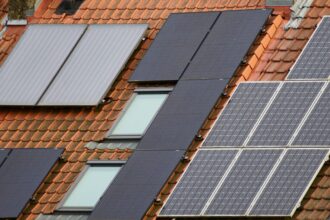India is set to witness a massive expansion in its solar cell manufacturing capacity, which is expected to grow from 10 GW in 2024 to 50-55 GW by 2027. This rapid growth is driven by the government’s push to reduce reliance on imported solar cells and modules, promoting self-sufficiency in the renewable energy sector.
To achieve this ambitious target, India will require a capital investment of ₹28,000-30,000 crore. The funding structure is likely to be a 70:30 debt-equity ratio, ensuring financial stability and efficient execution of expansion plans.
Government Policies & Support
The government has introduced several policies to support domestic solar cell manufacturing:
– Approved List of Models and Manufacturers (ALMM): Solar projects are required to procure cells only from approved domestic manufacturers.
– Production-Linked Incentive (PLI) Scheme: Provides financial incentives to boost local manufacturing.
– Domestic Content Requirement (DCR): Encourages the use of domestically manufactured components in solar projects.
Growth in Solar Module & Cell Production
Solar Module Capacity
– March 2020: 7 GW
– March 2024: 60 GW
Solar Cell Capacity
– FY24: 10 GW
– FY27 (Estimated): 55 GW
Reducing Dependence on Imports
India currently imports over 80% of its solar cells, with China being the primary supplier. However, efforts to boost domestic manufacturing have already shown results:
– Solar module imports dropped from 45% in FY23 to 25% in FY24.
– Despite these improvements, short-term dependence on imports is expected until domestic production fully ramps up.
Cost & Self-Reliance Impact
– In a fully domestically manufactured solar module, 70-80% of the total cost comes from solar cell production.
– The share of domestically produced solar capacity is projected to grow from 15% in FY24 to over 50% by FY27.
Investment & Returns in the Energy Sector
– Investment intensity in the solar sector is expected to remain high, at 1.3-1.5 times annually over the next three years.
– The combination of rising demand and ALMM-backed policies will drive higher earnings for energy companies.
– The expected payback period for investments in solar projects is 4-5 years, making it an attractive opportunity for investors.
India’s solar energy sector is undergoing rapid transformation, with a strong push toward domestic manufacturing. By increasing local production, the country aims to reduce import dependence, strengthen energy security, and drive long-term sustainability in the renewable energy sector.







